Millionaires, movie gods and rock stars were once a common site in Tedder Ave’s restaurants and cafes in Main Beach. Then it all fell apart. HERE’S WHAT WENT WRONG
Through the area’s heyday of the 1990s and 2000s, it was the Gold Coast’s go-to place for fine dining, or just to be seen.
But Tedder Ave went into a steep decline in the late 2000s and 2010s.
Visitors and residents were more likely to see row after row of empty shopfronts and closed business than U2’s Bono and the Rolling Stones’ Mick Jagger who had both frequented the area during visits.
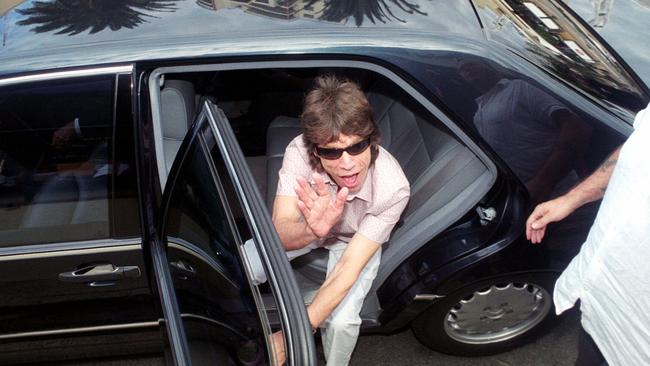
The area has had a long history of changes since it began to be developed more than 130 years ago. The township of Southport began springing up in the late 1870s, when pubs and hotels such as the Southport Hotel were built.
It expanded dramatically in the 1880s and 1890s and locals would often make the trip across the Nerang River to enjoy Main Beach’s surf. It was better than that of Southport, which was open to the sea at the time before the Broadwater was formed.
A popular camping ground opened close to the beach where people would pitch their tents and enjoy a holiday with incredible views down the coastline.
Southport and the nearby suburb of Elston, later known as Surfers Paradise, became increasingly busy through the early decades of the 20th century as more people moved to the region.
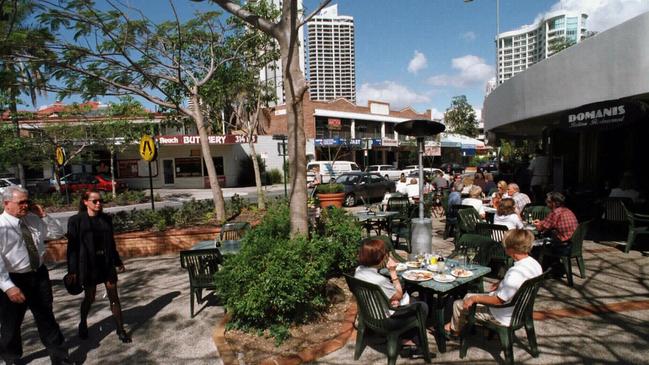
It became clear it was time to retire the ferry that crossed the river and build a bridge which could cope with the traffic. The Jubilee Bridge opened in 1925 and ran from the end of Southport’s Queen Street to near the current location of Southport Yacht Club.
The wooden bridge was narrow and rickety by today’s standards but it led to the Southport Town Council to begin subdividing and developing the area.
It opened the same year the Southport Surf Life Saving Club opened at Main Beach.
The Southport Beaches Company began reclaiming land for housing in the early 1930s, filling in Shark Bay while the council built the Main Beach bathing pavilion in 1934.
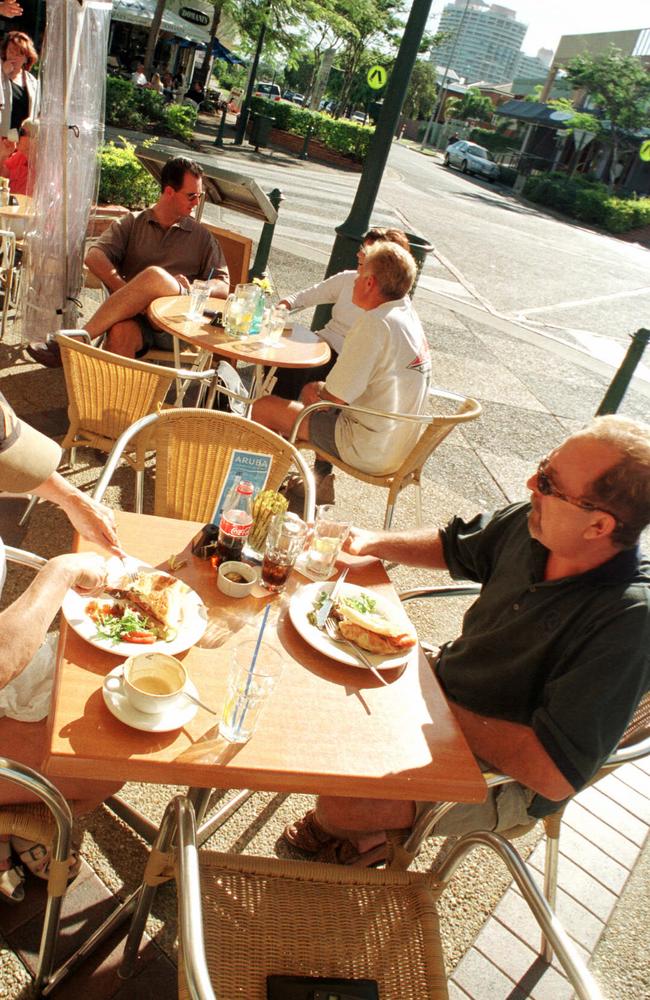
Fast-forward to the 1980s and Main Beach was one of the key beneficiaries of the development boom that had completely reshaped the city’s skyline during the previous decade.
It was home to two theme parks – Sea World and Andalucia Park, a popular but financially unsuccessful music venue in Fisherman’s Wharf – and the opulent Sheraton and Marina Mirage complexes.
The influx of tourists and big-money projects also saw Tedder Ave become home to some of the city’s best high-end restaurants, bars and cafes. By the mid-1990s, Main Beach was dubbed the Gold Coast’s answer to Sydney’s rich-lister enclave Double Bay.
“Only a few years ago the main road junction there housed typical beach-style corner stores,” a 1996 review of the area said.
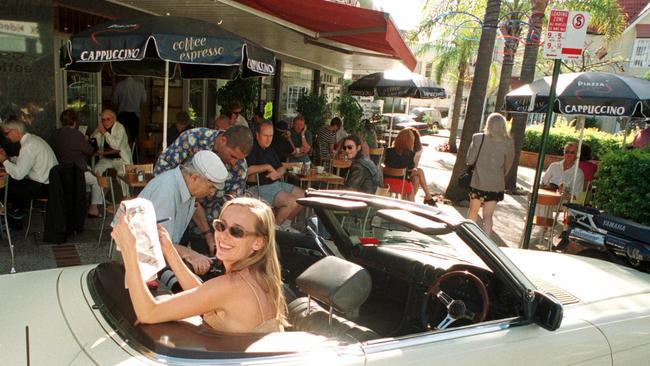
“Today there are at least 10 smart and trendy restaurants and coffee shops, elegant boutiques and up-market bottle shops to cater for the tastes and whims of the rich and beautiful who inhabit the surrounding high-rise apartment blocks.”
With luxury fashion retailers, celebrities and rich listers everywhere to be seen, the suburb earned the pejorative sobriquet “vain beach”.
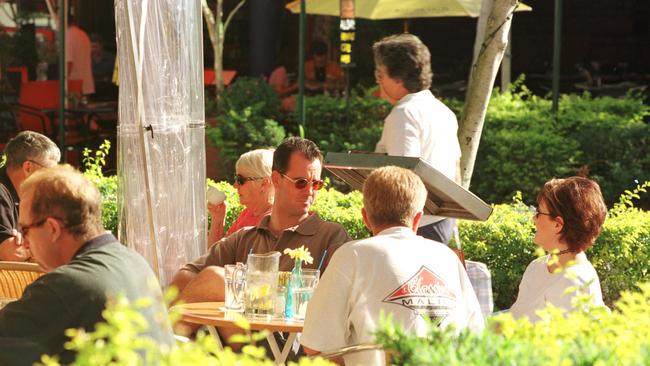
The opening of Sunland’s six-star Palazzo Versace in 2000 brought rock stars to the city. They were often photographed dining out at Domani’s, among other venues.
The year 2008 proved to be a significant line in the sand for Main Beach, when the global financial crisis putting many businesses to the sword.
The end of the annual Indy race cars carnival brought a decline of international visitors while the expansion of dining offerings at the revamped Robina Town Centre and Broadbeach drew the crowds away.
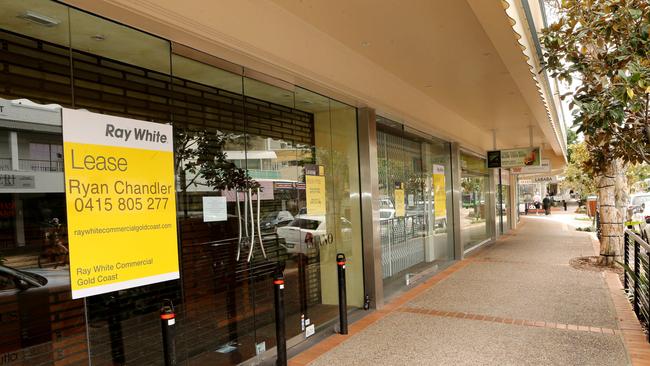
The area struggled through the 2010s, with shopfronts sitting empty and tourists staying away.
Georgie Brown, then-secretary of the Main Beach Progress Association and Tedder Ave Association blamed landlords for the issues.
“Rents are exorbitantly high, some say higher than those in Manhattan,” she said in 2015.
“We see busloads of Asian visitors going to the beach outside the surf club but never in Tedder.’’
Shuck owner Scott Budgen said at the time: “If you are not professional, you won’t make any money.”
Now, post-Covid, the area is again thriving on the back of a development boom.

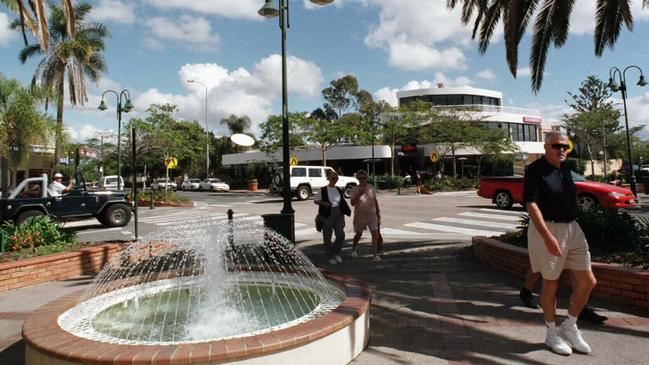
Add your comment to this story
To join the conversation, please log in. Don't have an account? Register
Join the conversation, you are commenting as Logout
Sharks unveil huge new stadium, $500m mega development
Southport Sharks has unveiled plans for a near-21,000-seat stadium and three residential towers in a massive redevelopment that could reshape the Gold Coast's sporting landscape.
Revealed: All Coast’s options for solving gridlock nightmare
The Gold Coast's population will surge by 350,000 in two decades, but the city's transport blueprint remains in limbo after light rail's dramatic cancellation. FIND OUT MORE